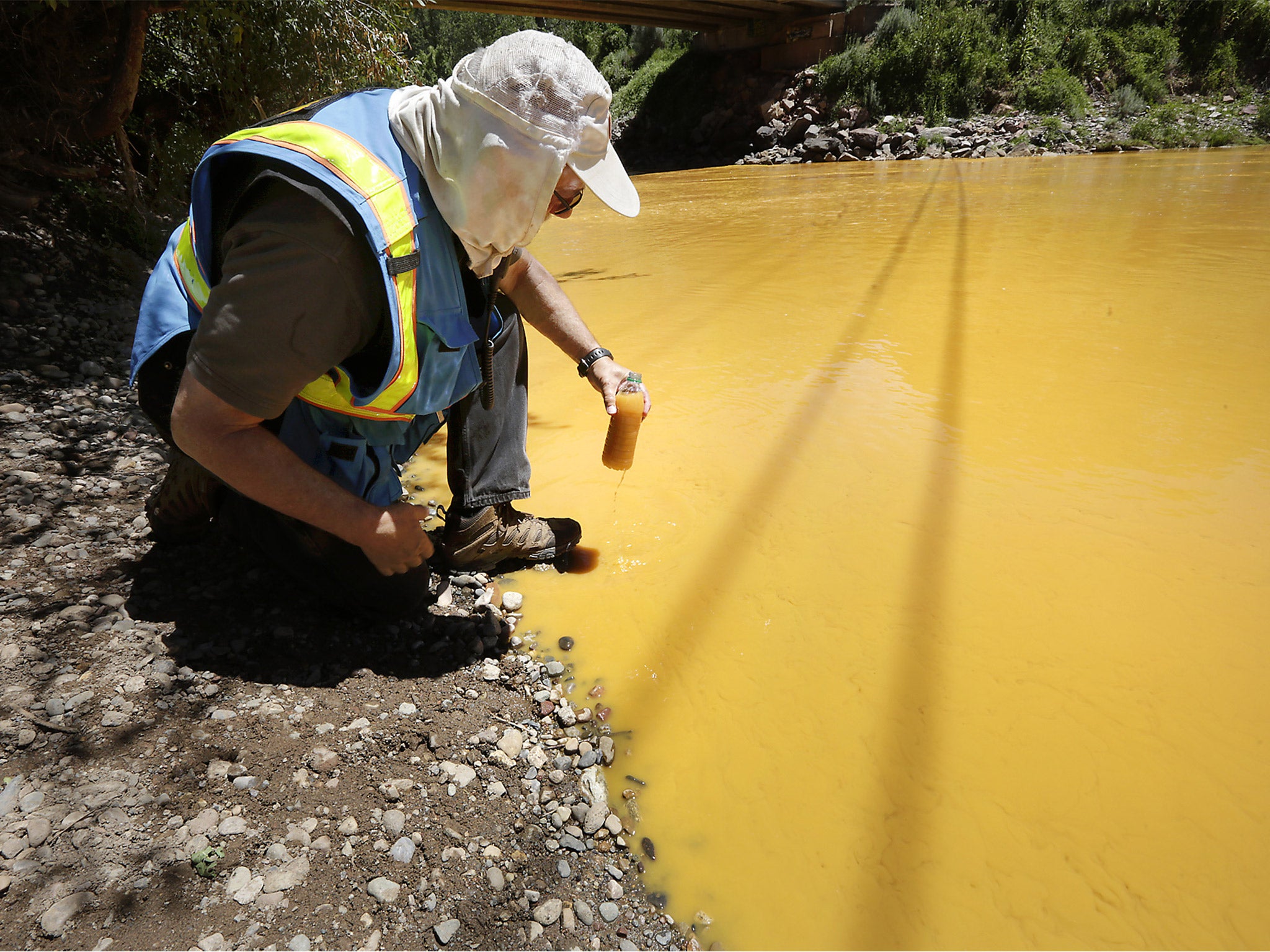Animas pollution: Native American nation to sue US environmental agency over toxic spill that turned river yellow
Navajo Nation's president claims more than 100,000 people have been affected

Your support helps us to tell the story
From reproductive rights to climate change to Big Tech, The Independent is on the ground when the story is developing. Whether it's investigating the financials of Elon Musk's pro-Trump PAC or producing our latest documentary, 'The A Word', which shines a light on the American women fighting for reproductive rights, we know how important it is to parse out the facts from the messaging.
At such a critical moment in US history, we need reporters on the ground. Your donation allows us to keep sending journalists to speak to both sides of the story.
The Independent is trusted by Americans across the entire political spectrum. And unlike many other quality news outlets, we choose not to lock Americans out of our reporting and analysis with paywalls. We believe quality journalism should be available to everyone, paid for by those who can afford it.
Your support makes all the difference.A Native American nation intends to sue the US Environmental Protection Agency over an accidental wastewater spill they claim affected more than 100,000 people.
Russell Begaye, president of the Navajo Nation, told TIME that more than two-thirds of the population - spanning territory in parts of Utah, Arizona and New Mexico - had been affected.
Almost three million gallons of wastewater, reportedly laden with lead, arsenic and other metals, was released into the Animas and San Juan rivers on 5 August.
The accident occurred during an investigation by EPA crews into the potential contaminated Gold King Mine, southwest Colorado.
“The spill has impacted us religiously, emotionally, financially,” Mr Begaye said.
The lawsuit asks the government to cover the livelihoods of farmers affected by the spill, who have been forced to move their cattle from the riverbeds and relocate to inland areas.
According to Mr Begaye, the accident has also forced the government to turn off irrigation water from the San Juan River as well as drinking water.
Bottled water is reportedly becoming scarce within the semi-autonomous nation.
"This is a huge issue," Mr Begaye told the Associated Press.
"This river, the San Juan, is our lifeline, not only in a spiritual sense but also it's an economic base that sustains the people that live along the river.

Although hastily assembled clean-up crews have built a series of four pools to attempt to prevent the contaminated yellow water from seeping into the main river, authorities admit the pools are not preventing water joining the main rivers.
Frustration has mounted within the territory, as many feel authorities have been too slow to act and the Native American group has borne the brunt of the accident.
Environmental Protection Agency Administrator Gina McCarthy said on Wednesday she intended to tour the affected region.
"I am absolutely, deeply sorry that this ever happened," she told reporters in Washington.
Although the Agency did not return The Independent’s requests for comment, a statement posted three days ago on its official website said the “plume” had dissipated downstream but that the organisation’s “primary objectives” remained ensuring people had safe access to drinking water and evaluating the possible effects on the “aquatic and fish” populations.
Additional reporting Associated Press
Join our commenting forum
Join thought-provoking conversations, follow other Independent readers and see their replies
Comments